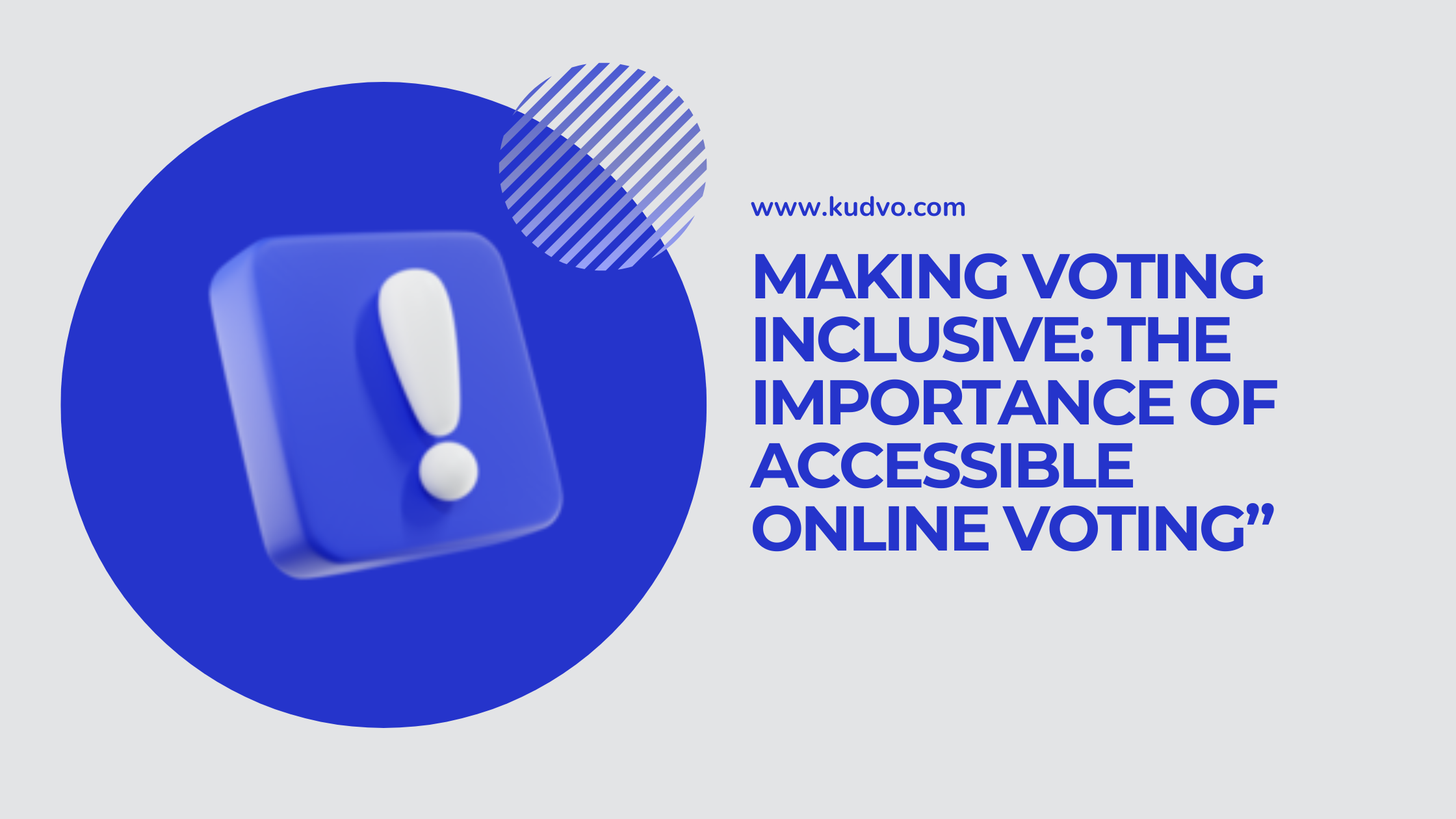Making Voting Inclusive: The Importance of Accessible Online Voting
Introduction
Did you know that millions of eligible voters face barriers when trying to cast their ballots? From mobility challenges to limited access to polling places, traditional voting methods can leave many behind.
In today’s digital era, voting should be easier and more inclusive. That’s where accessible online voting comes in. This transformative approach empowers more people—especially those with disabilities, seniors, and remote citizens—to exercise their fundamental right to vote.
In this post, we’ll explore why accessible online voting matters, the key benefits it brings, and how it can reshape democracy for the better. Let’s dive in.
Why Accessibility in Voting Matters
For democracy to thrive, every voice must count. But the reality is that many voters are left out due to physical, cognitive, or logistical challenges.
Here’s why accessibility needs to be a priority in any voting system:
61 million adults in the U.S. live with a disability (CDC).
Many polling stations are not fully accessible or offer limited support.
Long lines, transportation issues, and complex ballots can discourage participation.
Accessible voting ensures:
Equal access regardless of ability or location.
Privacy and independence in casting a vote.
Higher overall voter turnout.
Real-World Impact: In Estonia, a leader in online voting, over 44% of votes in 2023 were cast online—demonstrating how digital tools can drive engagement and convenience.
The Benefits of Online Voting for Accessibility
Online voting—when designed with accessibility in mind—can be a game-changer. Here’s how:
1. Empowering Voters with Disabilities
Traditional methods often require assistance, which can compromise privacy. Online voting can offer:
Screen reader compatibility for the visually impaired.
Keyboard navigation for those with motor disabilities.
Clear, user-friendly interfaces for cognitive accessibility.
2. Serving Remote and Elderly Populations
Not everyone can make it to a polling place—especially rural residents or seniors.
Benefits include:
Voting from the comfort of home.
Avoiding transportation barriers.
Accessible tech support options.
3. Enhancing Convenience for All
Even those without disabilities benefit from accessible design:
Mobile-friendly interfaces allow voting on smartphones or tablets.
Step-by-step guidance reduces confusion.
Error-checking features ensure accurate submissions.
Addressing Security and Trust in Online Voting
One concern around online voting is security—and rightly so. But advancements in cybersecurity and blockchain are making safe, secure digital voting possible.
Key safeguards include:
End-to-end encryption to protect data.
Multi-factor authentication to verify identity.
Audit trails and verification tools for transparency.
Countries like Switzerland and pilots in U.S. states like West Virginia show that secure, accessible online voting is achievable with the right technology and oversight.
Moving Forward: Making Accessibility a Priority
To make voting inclusive for everyone, governments and election bodies should:
Adopt universal design principles when creating online voting systems.
Engage with disability advocates and test platforms with real users.
Provide training and support for voters unfamiliar with tech.
Invest in infrastructure that supports secure digital platforms.
Example: The nonprofit Kudvo is actively working on inclusive digital solutions that ensure online platforms, including voting systems, are usable by all—proving accessibility and innovation can go hand in hand.
Conclusion
Accessible online voting isn't just about technology—it’s about equity, empowerment, and participation. It opens the door to a future where no eligible voter is left behind due to barriers beyond their control.
Let’s prioritize accessibility and build voting systems that reflect the inclusive democracy we all deserve.
📢 Explore more about accessible tech solutions at Kudvo.
